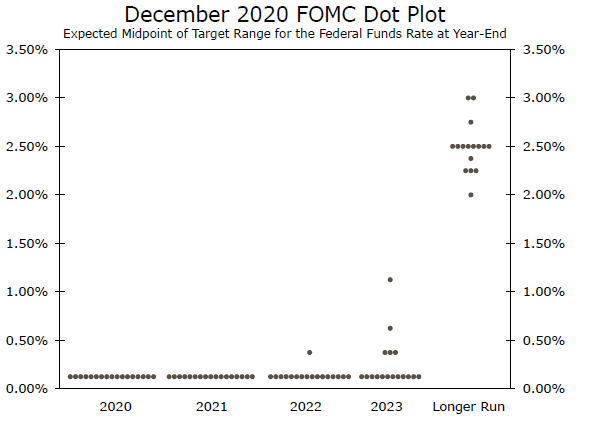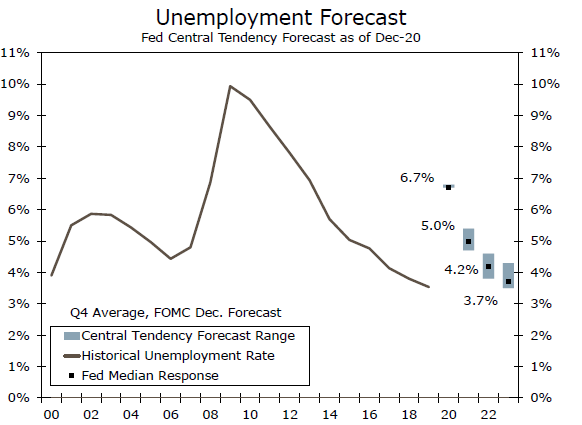The FOMC probably did not offer the clarity for asset purchases that some market participants had wanted. But in our view, the Fed will continue to buy Treasury securities and MBS well into next year
Timeline for Asset Purchases Remains Somewhat Vague
As widely expected, the Federal Open Market Committee (FOMC) made no material changes to its main policy instruments at today’s meeting. By unanimous decision, the committee decided to maintain its target range for its main policy rate between 0.00% and 0.25% “until labor market conditions have reached levels consistent with the Committee’s assessments of maximum employment and inflation has risen to two percent and is on track to moderately exceed two percent for some time.” Furthermore, the FOMC decided to continue its purchases of Treasury securities and mortgage-backed securities (MBS) in amounts of roughly $80 billion and $40 billion per month, respectively.
However, the FOMC made a tweak to its outlook regarding the length of time that it will continue to purchase Treasury securities and MBS. Previously, the committee said that it would continue its asset purchases “over coming months.” In the statement that was released today, the committee said that asset purchases would continue “until substantial further progress has been made toward the Committee’s maximum employment and price stability goals.” The meaning of “substantial” is vague and likely did not provide the clarity that some market participants had hoped. But in our view, the Fed will presumably continue to purchase assets for more than just the “coming months.” In short, long-term interest rates likely will remain at extraordinarily low levels for the foreseeable future.
Additionally, the committee updated its Summary of Economic Projections (SEP). The vast majority of committee members continue to think that the target range for the Fed’s main policy rate will remain between 0.00% and 0.25% through at least the end of 2022 (top chart). But the committee also revised its forecasts for real GDP growth a bit higher. In the September SEP, most of the committee members (i.e., the central tendency) forecasted that real GDP growth in 2021 would fall within a range of 3.6% to 4.7%. The central tendency range was nudged up to 3.7% to 5.0% in the SEP that was released today (middle chart). The rollout of COVID vaccines that is currently getting started may have caused some committee members to revise their forecasts for GDP growth next year a bit higher. Consequently, the central tendency for the unemployment rate next year was pushed down. That said, most committee members see the unemployment rate in a 4.7% to 5.4% range next year (bottom chart). That range is probably higher than what the Fed believes is consistent with “maximum employment.” This forecasted unemployment rate, in conjunction with the forecasted inflation rate of less than 2% next year, are specific reasons to expect that the Federal Reserve will continue to purchase Treasury securities and MBS well into next year.
















